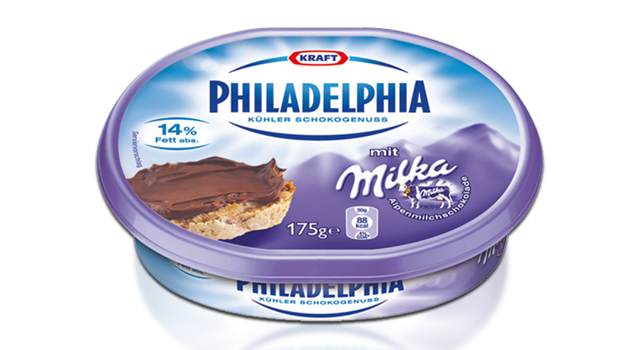
I’ve read somewhere that the product is created at the company, while the brand is created directly in the mind of the customer.
It’s a definition which is perfectly suits to the topic of this article: co-branding.
HAVING CREATED THE PRODUCT, HOW CAN WE MAKE SURE THAT SOMEONE WANTS TO BUY IT?
If the research and development work is fundamental, you certainly can’t underestimate phase 2. I’m referring to all that work that is usually dismissed under the generic heading of “marketing”.
P.S. Simplification which is often justified by a genuine problem: the mediocrity that exists in this field.
“Marketing” is that work which determines 2 aspects which are vital for your business: the number of pallets loaded with products which are leaving your warehouses and the money transfers which are arriving on time in your bank account.
If these two things are not happening normally and consistently, then I’m sorry to have to tell you but you’re getting something wrong in your marketing.
Let’s take stock: the market is crowded and in some sectors it’s saturated beyond measure. So what to do to distinguish your product from the competition, to distance yourself from the price war and to make your market share unassailable?
And here’s the answer again, it’s always the same one: you must have a good marketing strategy, one which works directly in the mind of the consumer to create something more than a simple impulse to buy. You have to create a place reserved for your brand!
I am sure you know that the most important aspect of marketing to get your product noticed by the consumer and to convince them to buy it is your product’s packaging.
Moreover the packaging has to be done, the wrapping of the product is a mandatory component. So you have two possibilities: come up with a good packaging solution or come up with a mediocre one.
Careful: it doesn’t mean a beautiful or ugly solution but rather a right or wrong solution.
Right –> aimed at sales
Wrong –> having no effect on sales or actually damaging them
Now, though, please follow me because we’ve gone inside the customer’s head and we have to move carefully so we can make sure we engage the right gears.
I want to talk to you today about an idea that in recent years is really catching on and which lately I’ve pursued personally with several brands such as Barilla, Molinari and Alce Nero.
We’re talking about co-branding, a commercial operation born out of the union of two separate brands which create a new product.
The first example which comes to mind and which you might know is the little cup of EstaThé and Nutella; in this case we’re talking about the same company (Ferrero) even if the brands are different, so thinking with the eyes of the consumer to all intents and purposes we’re dealing with two separate brands.
Co-branding isn’t simply a commercial stunt; when used properly it can help you to gain a special place in the customer’s mind, the place that every product needs today in order to stay in the market; what’s more there is a double benefit because it generates sales for two companies.
HOW CO-BRANDING WORKS
An essential requirement is complementarity.
When I take a break with Nutella and I drink EstaThé that’s exactly what happens; I’m looking at 2 complementary products.
When I eat a Beretta bread roll with Leerdammer cheese as filling that’s what happens and when children have a snack and put Smarties in Fruttolo (fruit yoghurt), it happens again.
Co-branding used well helps your product and your brand on 3 fronts:
1) I associate my product with a category leading product
The mind of the consumer (where your brand has to earn a space) thinks in categories. There are different product categories and for every category there is a brand leader.
Associating your product with a leader product from another category helps you yourself to be perceived as leader of your category, precisely because champions hang out with champions.
In the event you are both recognised as leader products a strategic co-branding operation will strengthen this position.
2) I reach a new target where I wasn’t yet the leader
Associating 2 separate brands in a commercial operation helps to reach a new target.
I love Leerdammer cheese so I buy a Beretta bread roll with speck and Leerdammer cheese, or I love Beretta ready-to-eat snacks and so I buy the same bread roll thereby discovering Leerdammer cheese which until shortly before was for me just one of the many cheeses. Two outlooks, from two different targets, which lead to the same outcome: a purchase.
In a clever way, Fruttolo and Smarties create a product introducing Smarties to many children who up till then had never tasted them (and vice versa introducing Fruttolo).
3) I create a new category
In some cases a new category is created and it’s the situation that I prefer; I’m thinking of chocolate-flavoured Philadelphia cheese produced in conjunction with the Milka company. Technically it’s chocolate-flavoured Philadelphia cheese, but actually it’s a new category. A spreadable chocolate-flavoured fresh cheese which didn’t exist. Do we put it in the cheese section or the sweets section?
WITHOUT PACKAGING THERE’S NO CO-BRANDING
In all these operations the packaging plays a vital role. By way of a single wrapping you need to communicate the presence of two brands with their distinctive aspects. Here things get really tough, because you’re working with two elephants in a china shop, if you make a bad move you wreak havoc. Experience is required, don’t risk doing twice the damage, rather sit tight!
You also need to convey the concept of the new product and to respect the perfect balance of characteristics, including the aesthetic ones, of the two brands. By way of a mundane example, the product colours and the 2 logos which have to co-exist on the same package have to find the magic formula for a happy marriage.
We can safely say that the success of a co-branding operation depends on the characteristics of the packaging. I repeat, to get it wrong in this case is doubly detrimental.
I’ve given you a few well-known examples for the sake of simplicity, but I believe that co-branding isn’t a solution reserved only for the big names, quite the contrary, in lots of cases highly specialised small producers are perfect for targeted co-branding operations.
On several occasions I’ve happened to suggest solutions like this to my clients acting literally as a bridge between the companies.
As always, the more you succeed in creating the conditions to get your product noticed as different and unique the more your chances of success increase. This is an operation which takes place completely inside the mind of the customer and the use of co-branding can help you to achieve this objective.
Everything we’ve talked about remains useless unless you succeed in conveying it properly via the packaging. Contact us obligation-free, we’ll show you in detail how a targeted packaging solution could help you to increase sales of your product including with the help of a co-branding operation.
In 1996 enters in the world of marketing, in 1999 founded Ardigia Marketing Funzionale (Ardigia Functional Marketing), in 2013 founded Packaging in Italy, Design Agency for Packaging Positioning™



paolo
ottimo e interessante articolo,
allego mio post sul co-branding pensato per il mondo delle carte.
saluti
http://pandemiapolitica.com/2014/05/29/spunti-di-guerrilla-marketing-pandemica/
saluti
paolo orlandi